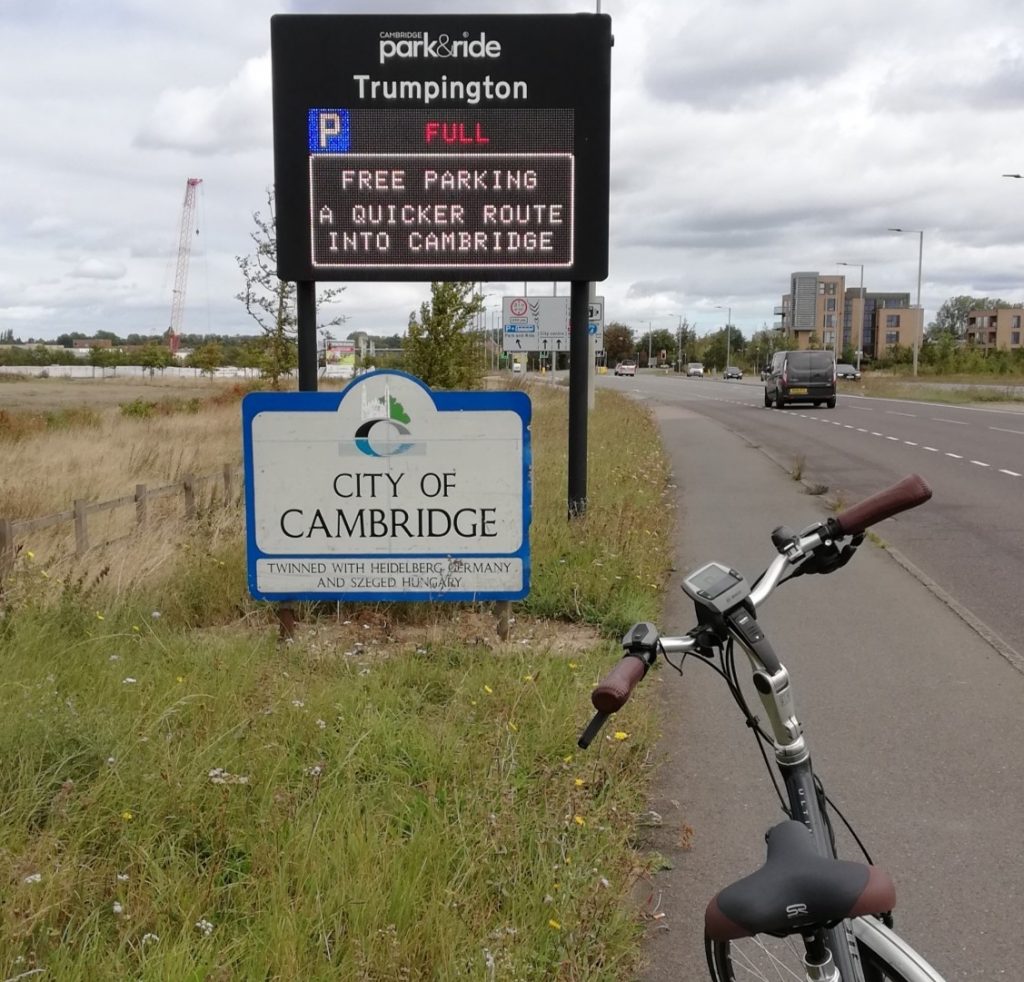Susan van de Ven
Liberal Democrat Councillor for Bassingbourn, Litlington, Melbourn, Meldreth and Whaddon Learn more
A new ‘temporary’ park and ride
by Susan van de Ven on 18 September, 2019

A site for a new Park and Ride has been approved by the Greater Cambridge Partnership, though it still requires planning permission. It’s on the south side of the M11 junction in Hauxton and is officially called Cambridge South West Park and Ride.
This is a deeply fraught issue, largely arising in reactive mode to the inability of the Addenbrooke’s site staff and other Cambridge-bound commuters to get to work. The Addenbrooke’s site – now called Cambridge Biomedical Campus – has grown very significantly, however there is little car parking space for staff. Many doctors, nurses and others therefore rely on Trumpington Park and Ride – which is often at capacity. Some work is already underway there for a small extension.
The new Park and Ride will cost about £20 million from the Greater Cambridge Partnership budget (that’s government money for strategic growth, not council funding). It will increase traffic on local roads, and by decree of the Mayor can only be ‘temporary’. What does that mean? The Mayor says the facility must be adapted to serve a new form of public transport (the funding for which is unknown) that would obviate the need for the currently planned P&R. Details of construction will become known at the planning application stage. The trenches that have recently appeared in the ground are part of the archaeological work preceding a planning application.
To give a sense of scale, the Trumpington Park and Ride facility holds about 1600 car park spaces, while the new Cambridge South West facility will hold 2200 car park spaces. Adding to this collective is a proposed 750-space car park ‘Foxton Travel Hub’. That’s quite a volume of car traffic coalescing around the A10, in an effort to intercept Cambridge-bound vehicle traffic, and it will inevitably introduce new problems.
(For more information on the Foxton Travel Hub, please see https://www.greatercambridge.org.uk/foxton-travel-hub-consultation/ or do attend the public consultation drop-in event October 8, 6-8:00PM, Foxton Village Hall.)
This extreme reactive situation reflects a failure over many years by the Local Transport Authority (previously Cambridgeshire County Council, now the Mayor) to develop a high-quality public transport system to mitigate against an increase in private car use. Instead, the local bus network has diminished rather than strengthened.
How did we get to this point?
Ten years ago, in 2009, there was cause for hope: the then Government’s ‘Transport Innovation Fund’ award was made to Cambridgeshire County Council to develop a sophisticated bus and public transport network, feeding in and out of Cambridge. Traffic modelling had showed that if nothing was done, gridlock congestion would become the norm. The Transport Innovation Fund was contingent upon the introduction of a Cambridge congestion charge, the proceeds of which would finance the public transport network. It was intended that the first step be the creation of the public transport network; the congestion charge would only be introduced once public transport alternatives had been established, allowing private car drivers a choice.
The County Council supported the project on a cross-party basis, but then the government of the day found it didn’t have the money to deliver it, and it was abruptly cancelled.
In 2010, the County Council’s administration made national news by announcing that it intended to remove all bus subsidies, effectively ending rural bus services. A threat of judicial review caused the decision to be suspended pending a public consultation. Once having satisfied the requirement of a public consultation, the council amended its decision, so that subsidies would be removed in a phased manner instead of all at once, even though the consultation demonstrated the public harm that would be caused by the loss of rural bus services. Those that still survive, including the 127 in our area, have won annual stays of execution.
Meanwhile other commercial services (like the old number 26 from the Mordens, Littlington, Bassingbourn, Meldreth, Shepreth, Barrington, Harston and on to Cambridge) have been withdrawn because of a fall in passenger numbers, attributed in part to buses getting stuck in traffic congestion and students ending up late for college.
It is this failure to develop public transport in the Greater Cambridge area (with the exception of rail, serving only a limited area) that has contributed to the current predicament whereby traffic into Cambridge is frequently gridlocked and Park and Ride is full. Meanwhile, the Biomedical Campus continues to grow, and staff arriving from villages without public transport have no other option but to drive. What a mess.
Please note:
If you are looking to get to Addenbrooke’s from the A10 corridor, the relatively new Stagecoach Bus A from Royston, stopping at Melbourn, Shepreth, Foxton, Harston and Trumpington Park and Ride, going to Addenbrooke’s and on to Cambridge Station, Cambridge Regional College and St Ives, is a good and reliable journey to hospital, partly because it follows the Guided Busway track from Trumpington Park and Ride and misses out a chunk of Cambridge traffic congestion.
Leave a comment
Leave a Reply